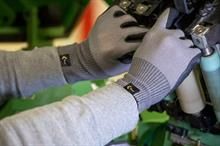
CAC has supplied automotive OEMs with lightweight composite components since 2006, focusing on visual carbon fibre prepreg parts, according to a press release by CAC. With new European regulatory targets approaching fast, manufacturers have requested CAC with developing alternative composite technologies using more sustainable materials.
CAC has used flax fibre prepregs with autoclave processing to create the new components. The low-density flax fibres, typically cultivated in Western Europe and much less energy intensive to produce than carbon, provide good impact resistance and excellent vibration damping making them suitable for a wide variety of parts including interior as well as exterior parts.
The new CAC programme provides OEM customers with several options to include sustainable natural fibres, with the company now offering the following: Standard visual carbon twill outer ply with flax fibre backing plies. This option maintains the classic carbon look of a twill weave carbon fabric but substitutes the backing plies (often two plies) for a woven flax prepreg material; Visual flax twill outer ply with flax fibre backing plies. Maximising the natural fibre content with 100 per cent flax fibre reinforcement produces the most sustainable construction; Body colour painted flax fibre components. CAC has productionised fully painted flax fibre parts, providing a natural fibre composite option for components where a visual fibre finish is not required.
“Developing the highest quality flax-based visual composite solutions for our OEM customers has been challenging yet rewarding,” Michel Roeffaers, managing director commercial, CAC, said in the release. “I am proud of the results that the team has achieved with CAC now offering a full range of natural fibre composite options that perfectly complement our traditional visual carbon fibre parts.”
By leveraging its strengths in clear coated carbon manufacturing, and natural fibre expertise developed in other business units, CAC has successfully navigated the challenges of processing flax to meet the tough automotive quality standards. Working with leading global suppliers, CAC can colour the protective lacquer, epoxy resin system, and even the flax fibres themselves, creating natural fibre components with a huge palette of potential colours and shades.
Fibre2Fashion News Desk (NB)

